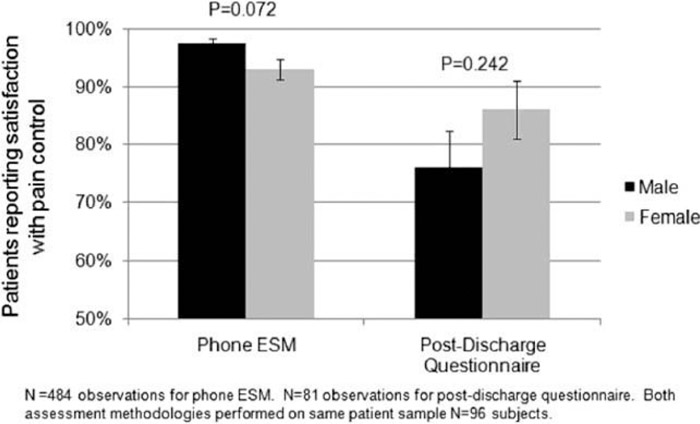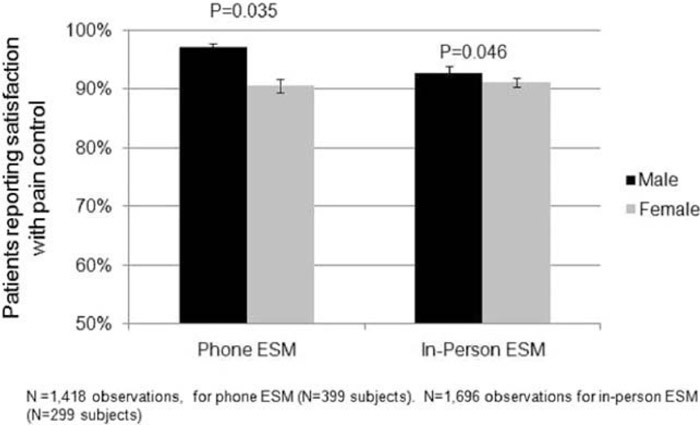Background:
Postdischarge assessments of pain and pain control among recently hospitalized patients are an established element of hospital quality measurement. However, retrospective assessments may not accurately measure pain because patient experience varies over time and recall can be poor. The experience sampling method (ESM) provides real‐time assessment of patients’ experiences by capturing momentary experiences at randomly selected times throughout the day. This study compares data obtained from traditional postdischarge assessments with 2 ESM methodologies: the gold standard—in‐person ESM—and a less expensive, but perhaps less representative, phone‐based approach.
Methods:
This study employed 2 phases of data collection, a phone phase (n = 399 participants, June 23, 2008–January 25, 2009) and an in‐person phase (n = 204 participants, November 3, 2009–June 15, 2010). After patient consent and collection of demographic information, study staff either called (phone phase) or visited (in‐person phase) the patient at 5 randomly assigned times throughout the day (9 AM–5 PM) to administer the ESM survey. The questionnaire asked about whether any pain had been experienced, present pain and its severity, pain medication, and satisfaction with pain control. Thirty days after discharge, a questionnaire was administered asking about pain and its severity throughout the hospital stay and perceptions of pain management and the quality of care received. Relationships between ESM survey questions were compared across all 3 methodologies using multivariate hierarchical regression.
Results:
Sex was the only statistically significant demographic predictor of satisfaction with pain management measured either with postdischarge surveys or ESM. However, phone ESM suggested greater satisfaction among men, whereas postdischarge surveys suggested greater satisfaction among women (Fig. 1). To further assess this difference, we compared a larger sample of phone ESM participants to an independent sample surveyed with in‐person ESM (Fig. 2). These results confirmed the result of phone ESM.
FIGURE 1. Comparison of Phone Experience Sampling Method (ESM) and Post‐Discharge Questionnaires for Measuring Satisfaction with Pain Management by Gender
FIGURE 2. Comparison of Phone and In‐Person Experience Sampling Method (ESM) for Measuring Satisfaction with Pain Management by Gender
Conclusions:
Postdischarge surveys and ESM do not always identify the same predictors of satisfaction with pain control. The similarity of results across ESM methods in independent samples suggests that ESM may provide a more robust approach to measuring patient satisfaction than postdischarge surveys and that phone ESM may be practical alternative to in‐person ESM.
Disclosures:
A. Schram ‐ none; A. Mayo ‐ none; H. Tak ‐ none; T. Eshedagho ‐ none; D. Meltzer ‐ none


